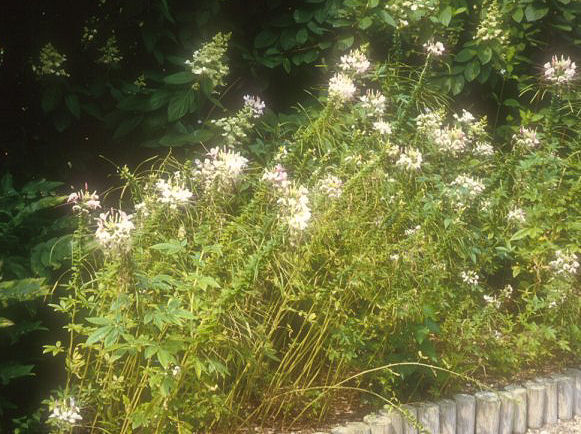| Botanical Name: Cleome hasslerana | |
| Common Name: Spider Flower |

-
Anatomy
-
Culture
-
Design
Plant Type
Annual
Height Range
3-6'
Flower Color
Pink, Purple, White
Flower Season
Summer, Fall
Leaf Color
Green
Bark Color
n/a
Fruit Color
n/a
Fruit Season
n/a
Sun
Full, Half
Water
Very Low, Low
Growth Rate
Fast
Soil Type
Sandy, Clay, Loam, Rocky, Unparticular
Soil Condition
Average, Rich, Well-drained, Dry
Soil pH
Acid, Neutral
Adverse Factors
Attracts Bees
Design Styles
English Cottage, Meadow, Seascape, Tropical
Accenting Features
Showy Flowers, Silhouette
Seasonal Interest
Summer, Fall
Location Uses
Background, Perennial Border, Walls / Fences
Special Uses
Cut Flowers, Naturalizing
Attracts Wildlife
Birds, Hummingbirds, Butterflies
Information by: Stephanie Duer
Photographer:
Photographer:
-
Description
-
Notes
Spider flower is a fast-growing annual that typically rises 3 to 6 feet tall on rigid stems. Blooms appear at the ends of the stems and are clusters of pink, purple or white spider-like flowers with protruding stamens, and it blooms from summer to frost. Flowers are sweetly fragrant. Flowers are followed by thin seed pods that ripen to brown before splitting open and dispersing the seed. Aromatic, sticky, palmate green leaves with lance-shaped leaflets have sharp spines at the base of each leaf stalk. Attractive to hummingbirds (nectar), birds (seed), and butterflies.
Grow in average, dry to medium, well-drained soils in full sun. Tolerates light shade. Best with consistent watering during the growing season, but once established, plants will tolerate some drought. If seed pods are not promptly removed, plants will self-seed, often aggressively. Hybrids may not come true from seed. Synonymous with C. spinosa.